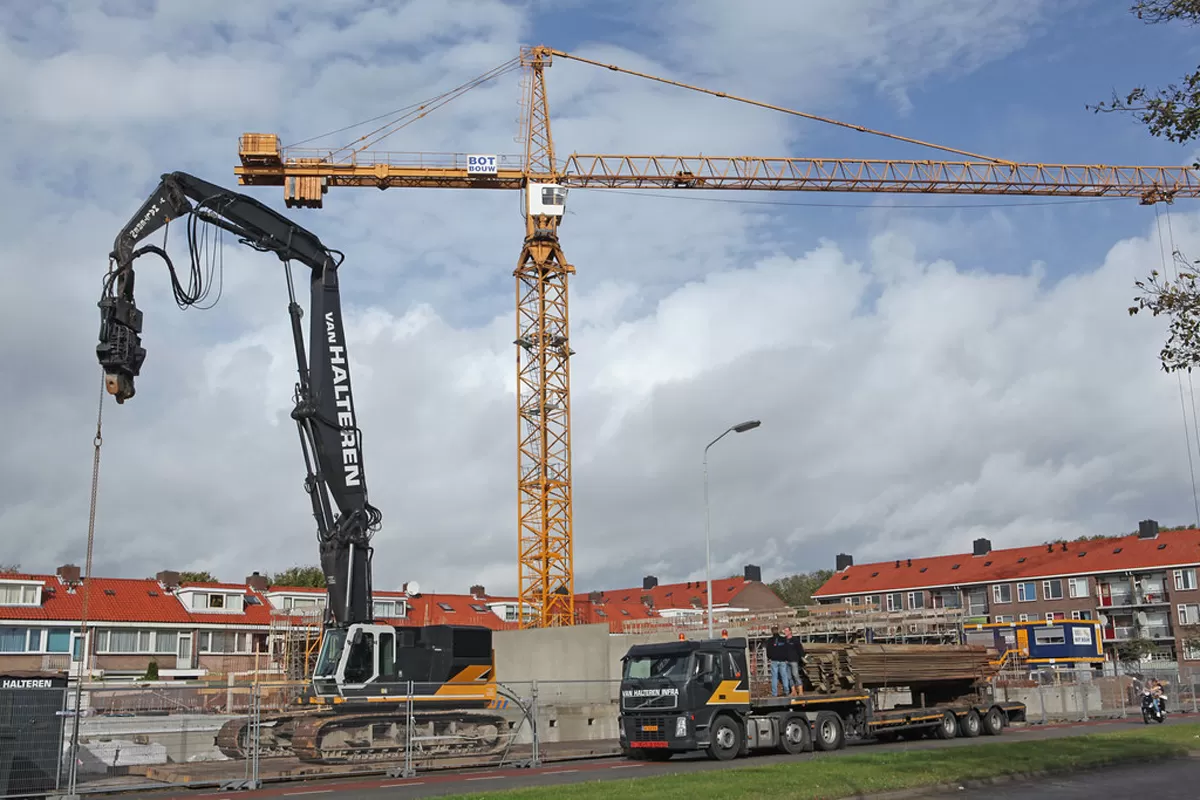Facility management companies are increasingly proving their mettle amid growing demand for third-party service providers for the maintenance of building facilities across India. With the increasing need for professionalised services in facility management (FM) felt by corporate houses and MNCs, it is now the turn of the commercial, residential and industrial sectors to outsource such activities for hassle-free management of their varied facilities. This not only ensures uninterrupted operation of vital services in any organisation but yields long-term cost benefits to the owners of the assets.
Sector impressions
Industry sources estimate the huge potential engulfing the residential sector at 200-300 million sq ft as the market size in dire need of professionalised FM services. With regard to commercial property, estimates put the figure at 300-400 million sq ft for Grade A office space that needs varied services in the fast-changing Indian economy.
A disquieting feature is the unorganised sector´s stiff competition with unskilled labour and unfair cost-cutting tactics, posing formidable challenges to the organised sector whose margins are under pressure today. It is a high-volume and moderate margin business today, growing at 10-12 per cent per annum, say industry sources. Others are bullish and estimate the growth trajectory at 15 per cent per annum. There is no denying that the Government´s thrust on infrastructure and growth in the real estate, hospitality and healthcare sectors have been instrumental in driving overall demand for FM.
Besides industrial parks, retail malls, educational institutions and the logistics and warehousing sectors are gaining momentum, which offers immense scope for FM services. Public Sector Undertakings do not outsource but manage through their own in-house management, which again offers a huge potential yet to be fully tapped.
Demand drivers
A significant development is that the office sector has picked up in 2014. In fact, Bengaluru alone accounted for 49 per cent of the country´s office space absorption last year, according to the Colliers International Market Survey on commercial property. The city is said to have absorbed 13.77 million sq ft of office space last year. This has necessitated the need for professionalised FM services in metros. However, there are others who feel that some developers might undertake FM services themselves, reducing the market pie for other companies.
Yet another segment that will drive demand is the Indian Diaspora, estimated at 30 million NRIs or PIOs living in 140 countries worldwide. A majority of the remittances has found its way into Indian equities, bonds and real estate. In fact, India is the largest recipient of remittance inflows globally at $ 70.4 billion in 2014, owing to the growing migration of Indian skilled professionals to several countries. It has been estimated that the growth in inflow of remittances is around 12.5 per cent over the past 10 years. Unlike in the Western and European countries, the FM concept itself is yet to gain momentum in India. As most of them invest in real estate in both residential and commercial properties with the government´s flexible norms to repatriate two residential properties and unlimited commercial properties. With the proliferation of FM companies will definitely pave the way for increased investment in real estate back home.
Professionally managed services
The Central Government has earmarked Rs 70,000 for infrastructure development this year. Although the real-estate market is subdued, commercial property absorption levels are clearly indicating revival signs with corporate houses and MNCs consolidating and expanding their existing operations across metros. A number of property developers have already expanded their network of operations across the country, necessitating the need for professionally managed FM services. Companies are able to cut costs, get better services and opt for technology-led solutions like remote monitoring of buildings.
FM services refers to the use of third-party service providers for the maintenance of the building facility or outsourcing the management of entire facilities to an organisation for the professional delivery of services, according to TechNavio´s analysis and forecast for the FM service market in India. The firm´s forecast has, in fact, overshot other estimates as it is expected to grow at a CAGR of 31.17 per cent over the period 2013-18. It comprises hard services or building operation and maintenance and soft services or support services, and energy management services. Hard services include electrical, electromechanical, mechanical, water management and energy management. Soft services are inclusive of housekeeping, security, catering, transportation, and horticulture and landscaping. It is gaining huge acceptance among the customers in the commercial sector as it helps companies in the hassle-free management of their facilities in a professional manner.
The involvement of FM services is not just confined to providing a comprehensive range of maintenance services to ensure uninterrupted operations. Significant cost-saving has been proven particularly in sectors like energy. For instance, 40-50 per cent of the building maintenance´s operating costs go for air-conditioning. Studies have revealed that in the lifecycle of a building, the cost of construction is only 10-20 per cent and the balance goes for maintenance and operational costs. ´If energy management cost is focused in any organisation, it will bring down substantial savings to the overall operational cost,´ says Aneesh Kadyan, Director-Operations for Asset Services, CBRE South Asia Pvt Ltd. This is one reason for a number of companies focusing on energy conservation across the country, he adds.
Value for services
According to Juggy Marwaha, Managing Director, JLL India, end users of FM services see great value in a comprehensive range of services, including best practices, systems, process reporting, software, etc, which are all available under one roof. ´In the process, we were able to achieve cumulative savings worth 10-20 per cent as end-to-end solutions enable us to achieve this,´ he adds.
In a related development, a large bank has outsourced its non-core activities to a FM company which resulted in a long-term operational cost saving of 5-10 per cent per year. This is apart from providing better quality services. In yet another instance, an MNC FM company could notch up energy-saving cost of 9-10 per cent year-on-year. International property consultants who have the requisite expertise in the areas of FM are able to get substantial savings for their clients; however, they are reluctant to disclose their identity owing to the confidentiality clause forming part of the agreement.
´Unlike in commercial buildings, the issue of maintenance cost in residential buildings invariably leads to questioning, owing to the entry of unorganised players in the market posing unhealthy competition,´ says P Ramakrishnan, Deputy Managing Director, Sobha Ltd. ´We focus on predictive maintenance, which cautions well in advance about impending problems, so appropriate measures can be taken to eliminate avoidable cost.´
´In a residential development, as property developers, we will have to hand over the project to the owners´ association once it is formed and unless they are convinced that a private-sector company can perform better to sustain uninterrupted maintenance services, it may not happen,´ says Harshvardhan Neotia, Chairman, Ambuja Neotia Group. ´But in a commercial project, our services are well appreciated; in fact, we manage over 5 million sq ft of commercial space, a clear indication of the growing level of confidence when it comes to providing FM services.´ In fact, they have benefited by way of cost savings over a period of time, he adds.
There are other corporate developers who are able to achieve similar cost savings as they are able to offer a one-stop solution to FM services to clients. While residential FM services may not be a big market as developers face fierce competition from unorganised operators and are obliged to handover to associations once formed, commercial property management dominates the need for a professionalised service company. ´This is because A-grade buildings need specialised FM services that can be handled by professionally managed companies,´ says Viswa Prathap Desu, Vice-President, Sales & Marketing, Brigade Group. ´Moreover, those with global clients are determined that premises must be maintained without any dislocation to services. It is not only maintenance; we were able to achieve on average 20 per cent savings in energy cost in some buildings.´
Green practices
Yet another factor is sustainability. Today a number of property developers focus on green buildings as they want to be seen as responsible citizens targeting sustainability and wish to work towards energy conservation. These twin factors have almost become an integral part of many residential projects across the country. The very fact that a number of MNCs today are keen to lease commercial spaces in green buildings is ample proof that developers are targeting green buildings in a manner hitherto unheard of.
FM software
The computerised CFMS system basically helps any organisation manage their resources more effectively. For instance, a help desk, once established, receives all customer complaints and forwards them proactively to the concerned to ensure uninterrupted operation of all basic services.
FM software makes it possible to improve processes within the facility department. Most of the value is not derived from direct cost savings or reductions in effort, but from improved processes, better services, and better strategic and tactical decisions. Therefore, value of FM software is derived from intangible benefits rather than direct savings.
There are two general types of FM software: One is software that directly supports the customer´s needs. The other is software that helps the facility staff provide services to internal customers.
Certain FM software tools (typically, transaction-based tools like work order management or preventive maintenance) are relatively easy to justify with cost-saving metrics like reduced staff hours, reduced downtime for production, reduced energy costs and reduced capital expenditures through planned replacement. These tools reduce expenditures and, therefore, permit budgets to be reduced or reallocated.
´The more complex facility management software tools like CAFM or integrated workplace management systems generate value indirectly,´ says Sonali Dhopte, Director, Excelize. ´These types of applications support many functions and provide value by making it possible to share information and processes across many functions and departments.´ Integrating building information modelling (BIM) with FM is the way forward and will yield tangible benefits, she adds.
The challenges
The FM sector has its own challenges amid unorganised players and lack of trained staff to manage the enterprises. Industry sources say the biggest challenge is the availability of a talent pool because there are no specific courses introduced in academic institutions to nurture people keen to enter the sector and take on FM as a career. There are special programmes run intermittently by various associations but they are hardly sufficient given the overall size of the industry and the need for professionalised services to manage millions of square feet of commercial and residential area. This is all the more important when the Government is keen to promote 100 smart cities across the country.
Yet another significant challenge is the availability of skilled manpower to manage specific services. Today, people from the hospitality and industrial sectors are entering FM services without much exposure to the specific needs of the sector. Fierce competition from the unorganised sector without qualified people undercutting costs also poses a formidable challenge to the organised sector, leading to shrinking of margins in running the enterprises. Thus, while the potential of FM in India is immense, the sector will have to grapple with these concerns in times to come.
-V NAGARAJAN
Quick Bytes
FM's business is growing at 10-12% per annum.
Inflow of remittances grown 12.5% over past 10 years
Proliferation of FM c?o?s ?to pave way for increased investment in real estate.
BIM is the way forward and will yield tangible benefits.
Nothing yet to nurture FM sector as a career: Biggest challenge availability of talent pool.
CASE STUDY
The challenge:
Cushman & Wakefield (C&W) was selected as the project manager for the interior fit-outs of the apartments undertaken by DLF, coordination of the clubhouse and quality management services, including the quantity surveying services of all the common areas and external development of the complex.
Coordination with numerous vendors for a particular activity for simultaneous completion and required timelines presented various challenges in execution owing to the intricate details and quality of finishes desired for the project. However, the execution for the interior fit-out of the apartments and common areas/external development is in full swing.
The solution:
The C&W team serves as a crucial link between the consultants, client and contractors to ensure smooth flow of information and handling the project. Standard operating project management procedures have been fine-tuned and made specific as per project requirement to monitor time, cost and quality aspects of the repetitive nature of activities in the high-end residential development.
The results:
The experienced core-resource team monitored the work, which calls for meticulous planning and coordination with local execution agencies. Project management and control processes along with necessary service deliverables are being accordingly planned to ensure conformance to the scope, agreed time, cost and quality parameters set for the prestigious super luxury residential project.
Major vendors
CBRE
Cushman & Wakefield
Jones Lang LaSalle
Knight Frank India
MacLellan
Tenon Property Services
Other prominent vendors
BVG India
George Maintenance Services
IL&FS Property Management and Services
LJ Hooker India
Perks Links and Services
Property Solutions
Sinar Jernih India
Duster Total Solutions
Updater Services
Vipul Facility Management
Source: TechNavio's analysis
To share your views on this article, write in at feedback@ConstructionWorld.in


















